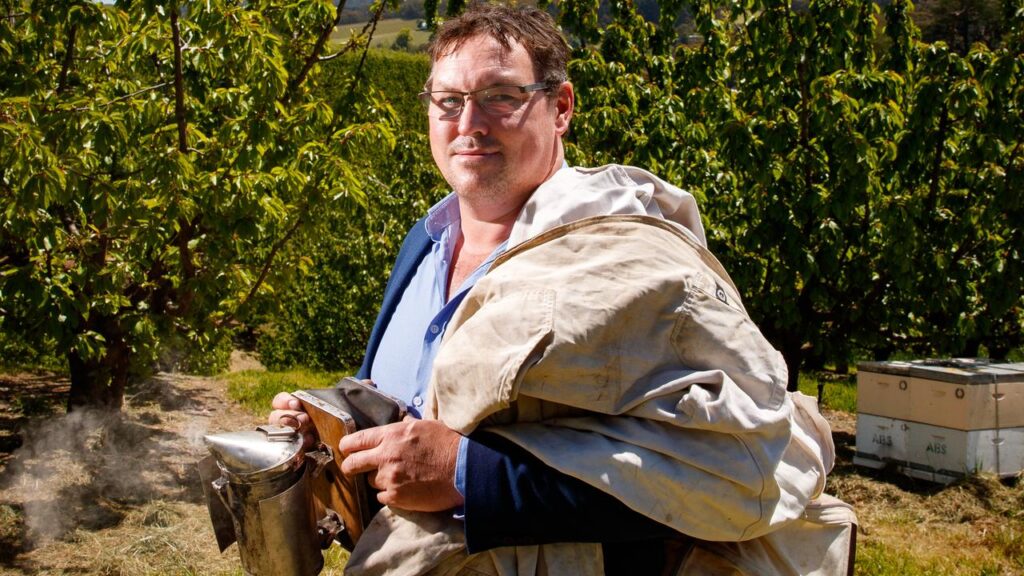Vinehealth Australia’s Acting CEO Suzanne McLoughlin attended the recent Plant Biosecurity Research Initiative (PBRI) conference held 8-9 May, and organised by Dr Jo Luck, Program Director PBRI (and Vinehealth Australia board member).
Keynote speaker on day 1 of the conference was Danny le Feuvre, CEO of the Australian Honey Bee Industry Council, who reflected on the honey bee industry’s recent Varroa mite incursion and road to recovery.
Danny provided some stark statistics from this incursion in NSW, as well as key learnings. This included that NSW, where Varroa mite has taken hold, holds 46% of Australia’s bee hives, of which 10% were euthanised as part of eradication efforts. Cost-sharing occurred between 26 affected parties and was vital to ensure the response could continue for as long as it did.
The Varroa mite response ran for 15 months focusing on eradication, until the National Management Group decided it was no longer technically feasible to eradicate. Australia was the last continent not to be infected with Varroa mite and therefore the strong eradication effort was warranted. With regulation removed, current distribution is still mostly contained to the originally-infected areas for now, but the bee industry is expecting geographic spread to increase.
History overseas shows that the presence of Varroa mite tends to bring Deformed wing virus with it. While this virus has not yet been seen in bees in NSW (or the rest of Australia), the bee industry is bracing itself for this secondary issue. In addition, with Varroa present, Australia is likely to see our feral bee populations decimated – with 90-95% of these bees being found to disappear overseas within a few years of Varroa taking hold. Accordingly, we should expect to see decreased crop pollination as a result.
Key learnings from this incursion were:
- The Emergency Plant Pest Response Deed (EPPRD) provided an effective notebook to guide the response and Plant Health Australia (PHA) provided necessary and informed judgement on the Deed. The cost-sharing aspect was vital and the only reason such a large response could be mounted.
- In the initial phases of the response the capacity provided by the government and their inclusion of industry to validate facts was very good.
- There is a need to incentivise industry to report biosecurity threats and to protect those first reporters from being the object of blame.
- On-ground impacts to industry were not necessarily incorporated into decision-making.
- Social license to operate was impacted and hard to regain, and therefore there is a strong need to proactively and swiftly counter misinformation through the response.
- There is a need to better quantify on-ground impacts to affected parties beyond that made in risk assessments.
- There is a need for a holistic biosecurity system review around what future biosecurity responses should look like, given we are facing decreased capability and capacity across government and industry.
- There is a need to consider the governance structures set up for responses and whether greater national collaboration is needed to support responses, rather than relying on state-based resourcing alone.
- There is a need to review compensation for those impacted.
- There is a need to think about what long term recovery looks like and better help those on the ground that have been most impacted to make this transition; there is a need for education, extension and strategic planning.
- There is a need to ensure industry involvement and leadership in terms of building industry capability and capacity; using appropriate language delivered by industry for industry, across various communication channels; improving industry’s understanding of the biosecurity system and the decision-making processes that fall within that system.
In finishing his keynote presentation, Danny urged all delegates to buy local Australian honey to help the industry survive – a sobering point.
For detail on the NSW Varroa mite response history and transition to management, refer here. For information on the Australian Honey Bee Industry Council, refer here.
For South Australia’s response to Varroa mite, refer here.
